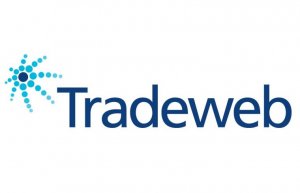The lead recycling race to the bottom. Retail FX and its love/hate relationship with marketing inefficiency
As smaller retail FX firms have evolved from the b-book closed environment to the provision of genuine market access, in many cases the marketing strategy remains completely outmoded and remains in the dark days of lead buying and affiliate marketing. We look at the unsustainable expense of this model and how modern engagement techniques are far more suited to quality brokers

Attracting and retaining clients is now one of the biggest challenges for brokers as the FX industry matures and as CPA (Cost Per Acquisition) which is a major factor within an online advertising model grow highers, averaging $1000 per funded client in western countries.
To tackle the issue, some of the smaller retail brokers to whom cost of acquisition and retention is extremely important, have been ever more active in developing their differentiation angle via various means, ranging from promoting the social trading experience to offering deposit bonuses and cash rebates, as well as loyalty programs and interactive marketing campaigns, while automating data intelligence for the sales teams.
On that note, trading platforms such as MetaTrader 4 may pose an issue given that the ubiquitous trading platform acts both as a key facet with which to onboard clients and as a retention problem, becoming one of the main criteria when choosing a broker to open an account with, which also means those brokers risk being easily substituted following a minor incident or an aggressive marketing campaign by a competitor.
This may well appear as though it is a complex lesson in mathematics; a matter in which accountants must balance the cost of leasing trading infrastructure from a third party platform supplier against the cost of buying media and generating leads, then subsequently factoring in the cost of sales staff to call the leads and then add up the profit post-conversion.
The reality is that in today’s retail FX industry, where the end users have become ever more sophisticated and can absolutely tell if a broker is surviving from their deposited capital instead of connecting to a live market, which has exponentially improved the standards in terms of execution of trades within many medium sized retail brokerages, however it has left a conundrum, that being the completely outmoded marketing model which is not compatible with the commission business that brokerages offering genuine market execution now provide.
As the infrastructure of OTC electronic trading firms becomes the increasing subject of regulatory remit as defined by the pan-European MiFID II which uses the coercive powers of the European Commission to ensure all market infrastructure and execution policies are standardized across multiple jurisdictions, brokers find themselves faced with high expectations from extremely analytical traders in the most high quality regions for electronic markets, and difficulty differentiating themselves from other retail brokerages using the same third party platforms.
Most importantly, however, aside from the 1231 near-identical MetaTrader 4 retail entities that currently exist, is that the execution model required nowadays means that brokers should do what brokers are supposed to do – charge a commission for processing trades to their liquidity provider and provide their clients with an aggregated price feed consisting of prime of prime liquidity from Tier 1 banks and non-bank market makers.
This is excellent for customers if conducted correctly, but means that brokers pay a dollar-per-million charge for their liquidity management system and market liquidity, and can charge a commission rather than have the vast margins that had been the case within so many smaller brokerages several years ago which resulted from the profit and loss model that many operated.
The brokers that came to market in the middle of the last decade with a profit and loss model (living from client losses) were never able to gain market share among quality jurisdictions where the established competition was already operating a good quality trading environment for clients – and rightly so, nobody laments the passing of firms which do not have their customers’ best interests in mind – instead coming from the affiliate marketing and media buying sector.
Now, many of those entities have adopted proper execution, facilitated by the market infrastructure specialists and prime of prime brokerages that serve the retail FX industry, but their marketing techniques in many cases remain in the mid 2000s, and in the retail FX industry, the mid 2000s is akin to the dark ages.
The fact of the matter is that high CPA of today requires ambitious goals when it comes to the client base, which means having enough available funds to embark on large marketing operations and have a unique value proposition to lower the CPA.
The quest for differentiation may also lead to the in-house development and maintenance of proprietary software despite the obvious costs because in addition to promoting their own platform to their clients and increasing the rate of client retention as they grow accustomed to an environment they will not likely find elsewhere, these brokers can also reduce their costs or even make profit out of offering white labeling solutions to other firms.
Simply, buying leads and hoping for sales calls to convert them into live clients is futile.
This is because the same leads are being recycled between brokers, the same leads are being targeted by firms offering similar propositions, and the media buying cost vs the actual conversion rate is as low as 1% in the retail sector.
Hence, one-off retail clients from non-aligned countries, with very little capital and in some cases no chance of being able to satisfy compliance requirements are depositing between $500 to $1000 as a first time deposit, and the cost of acquiring the customer is now past $1500, with a lifetime value of just three months.
Whichever way that is viewed, it is a loss.
One of the reasons for the high cost and lack of efficiency is that, according to two London-based media analytics firms that have provided digital marketing data to FinanceFeeds, the potential customers are in many cases no longer potential customers because these are leads that have been to over ten brokerages, hence the same people are being bombarded by the same calls from almost identical companies, and many have lost their initial deposit with the first company, and are therefore now worn down by the repetition of calls.
FinanceFeeds spoke today to Charlotte Day, Director of ContentWorks, a marketing specialist and long standing senior FX industry branding and strategy specialist to gain perspective on exactly this.
Ms Day said “Smart content attracts smart users. If you want to onboard serious traders (clients), then you need to cater to their wit and intellect. If you’re aiming for bottom of the barrel then go ahead and buy leads. You may get a lower initial CPA but you’ll get a high churn rate and probably a higher level of arbitrage which in reality makes for a less profitable business model. The choice is yours!”
During meetings with several retail FX brokerages in Cyprus last week, it was explained to FinanceFeeds that the dubious practice of onboarding clients by asking sales staff who have worked for other brokerages to bring leads with them – effectively stealing from their former employer for a fee – is still very much in existence.
FinanceFeeds has been notified of an advertisement made by one particular retail FX firm which is aimed at recruiting sales people, with the company specifically stating that a ‘bonus’ will be paid to new employees who are able to bring a database with them, effectively encouraging the stealing of intellectual property, and whilst this is insidious enough, it contributes to the small lead pool that is being overtargeted.
Companies wishing to reduce their costs and increase the quality of their client base, which in turn will increase the image and reputation of the broker should look toward partnering with entities that can help them get their message in front of dedicated traders from bona fide regions who have had a long period of activity and therefore will have a longer lifetime value and be more of a sensible read-across for the broker.
It is not simply a case of acquiring leads from popular retail websites with large traffic, for the reasons already stated here.
It is also very clear that entities and individuals peddling leads at $20 to $30 per lead have either stolen them from their previous employers, or are offering recycled leads with very little chance of conversion.
In some cases, the entities themselves are operating outside the law, as depicted by FinanceFeeds investigation into the matter here.
Markets such as Britain, Australia, Canada, New Zealand, Malaysia, South Africa, Singapore and Hong Kong are excellent regions for retail business, and can be accessed by working closely with entities in Anglophone areas with a strong following.
There are methods of achieving this, and especially methods that align your brokerage with the clients that expect good quality, have longevity and in turn elevate your business away from churning leads in an old fashioned manner which is not profitable.
The race to the bottom in terms of client availability for retail firms vs the cost of marketing can be reduced substantially by working with retail orientated broadcasters that do not sell leads, but instead have a loyal following of active traders.
In the case of TwoBlokesTrading, a British podcast series for retail traders, perpetuity value exists in that the loyal readership of over 800,000 per month and a download rate of 35,000 per month from dedicated and analytical traders is a good example.
A simple switch from the lead buying mentality into the engagement and high touch environment would likely create a cost saving and an elevation of reputation for many brokers.









